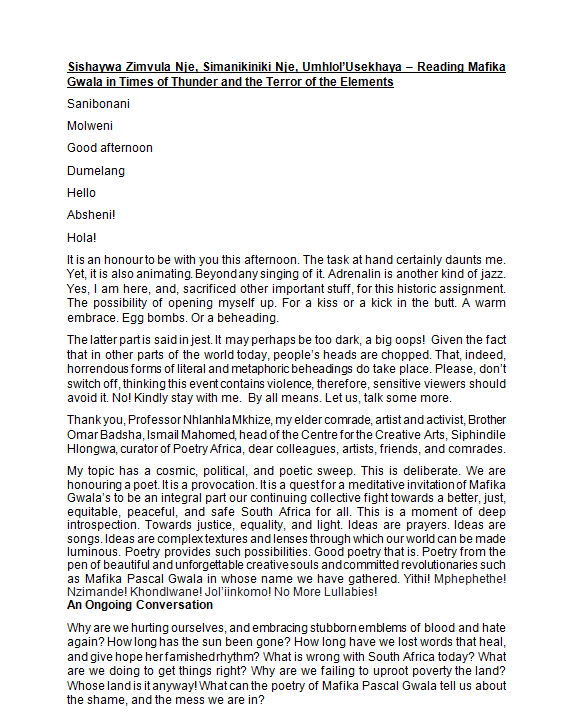Cahora Bassa Dam, Mozambique
Cahora Bassa, also spelled Cabora Bassa. This arch Dam and hydroelectric facility on the Zambezi River, is located in the Western part of Mozambique. The Cahora Bassa hydroelectric Dam was the last megaproject constructed in Africa during the era of decolonization. At the time of its construction, was the fifth largest Dam in the World. It is one of the three major Dams on the Zambezi river system, the others being the Kariba and the Itezhi-Tezhi, the latter on the Kafue River, a tributary of the Zambezi.
The Dam was built by a consortium of Portuguese, German, British, and South African companies. The construction of the Dam began in 1969 and was completed in 1974. The last of the five 425-megawatt generators was installed in 1979. Cahora Bassa Dam supplies power primarily to South Africa by using a power line over a 1 400 Kilometers long. This Dam is one of the largest Dams ever constructed specifically to export energy. The dam impounds Lake Cahora Bassa, which extends Westward for 240 km to the point where the borders of Zambia, Mozambique, and Zimbabwe converge. The lake measures 31 kilometres wide at its widest point and has a capacity of 63,000,000,000 cubic Metres.
Geolocation
-15° 43' 58.1826", 31° 33' 57.6"
References
https://www.britannica.com/topic/Cahora-Bassa-dam-and-hydroelectric-facility-Mozambique
Maidens Cove
Maiden's Cove is a beautiful scenic lookout point nestled between Clifton’s Beaches and Glen Beach in the Suburb of Camps Bay in the City of Cape Town. It is well known for; its exquisite views of Table Mountain and the Twelve Apostles, as well as its view of the Atlantic Ocean. The parking and grassy Area at Maiden’s Cove is a popular spot to watch the sunset, and there are braai areas for those who wish to make an evening or day of it. Dolphins can often be spotted frolicking in the water and during the months of June to November, it’s fantastic for whale watching. It is not very protected- so is best not visited on a windy day. Public ablutions are available. Maidens Cove has two tidal pools hidden between enormous granite boulders overlooked by a Picnic Site and Lions Head. This recreational space has a special History as it was one the few beaches where non-white residents of Cape Town could come and enjoy a day at the sea, in a whites-only Area. (This was because of Apartheid, and they were forbidden to use the other beaches of Clifton and Camps Bay.) Maiden's Cove still remains a special place for many people from the Bo-Kaap and Cape Flats, though. If you venture down towards the sea, you will find a tidal pool which is superb for exploring at low tide. This Cove is also one of the best free diving spots in the Cape Peninsula. The water from the Atlantic Ocean is chilly but irresistible for the sweltering summer months and tough little ones that don’t seem to feel the cold. Between June and November, Southern Right and Humpback Whales pass the shores and entertain their spectators as they blow fountains, leap out of the water, or splash its surface with their powerful flukes. Dolphins can be seen in the waves all year round. Thanks to the abundance of marine life, this is one of the best spots in the Area for free-diving. Maidens Cove is a beloved Area close to the hearts of the community with both emotional and Historical value. The City is obligated to handle it as a Public Trust for present and future generations.
Geolocation
-33° 55' 4.8", 18° 22' 30"
References
https://www.travelground.com/attractions/maidens-cove
https://www.sa-venues.com/things-to-do/westerncape/maidens-cove/
https://www.news24.com/News24/maidens-cove-development-under-fire-20180905
Further Reading
https://secretcapetown.co.za/maidens-cove-tidal-pool/
https://www.dailymaverick.co.za/article/2018-09-04-the-secret-weapon-of-maidens-cove-for-all/https://www.tripadvisor.com/Attraction_Review-g312659-d6539703-Reviews-Maidens_Cove-Cape_Town_Central_Western_Cape.html
https://www.instagram.com/p/Cn_xjrgMN_r/?igshid=MDJmNzVkMjY=
Sishaywa Zimvula Nje, Simanikiniki Nje, Umhlol’Usekhaya – Reading Mafika Gwala in Times of Thunder and the Terror of the Elements by Sanibonani Molweni

Good afternoon
Dumelang
Hello
Absheni!
Hola!
It is an honour to be with you this afternoon. The task at hand certainly daunts me. Yet, it is also animating. Beyond any singing of it. Adrenalin is another kind of jazz. Yes, I am here, and, sacrificed other important stuff, for this historic assignment. The possibility of opening myself up. For a kiss or a kick in the butt. A warm embrace. Egg bombs. Or a beheading.